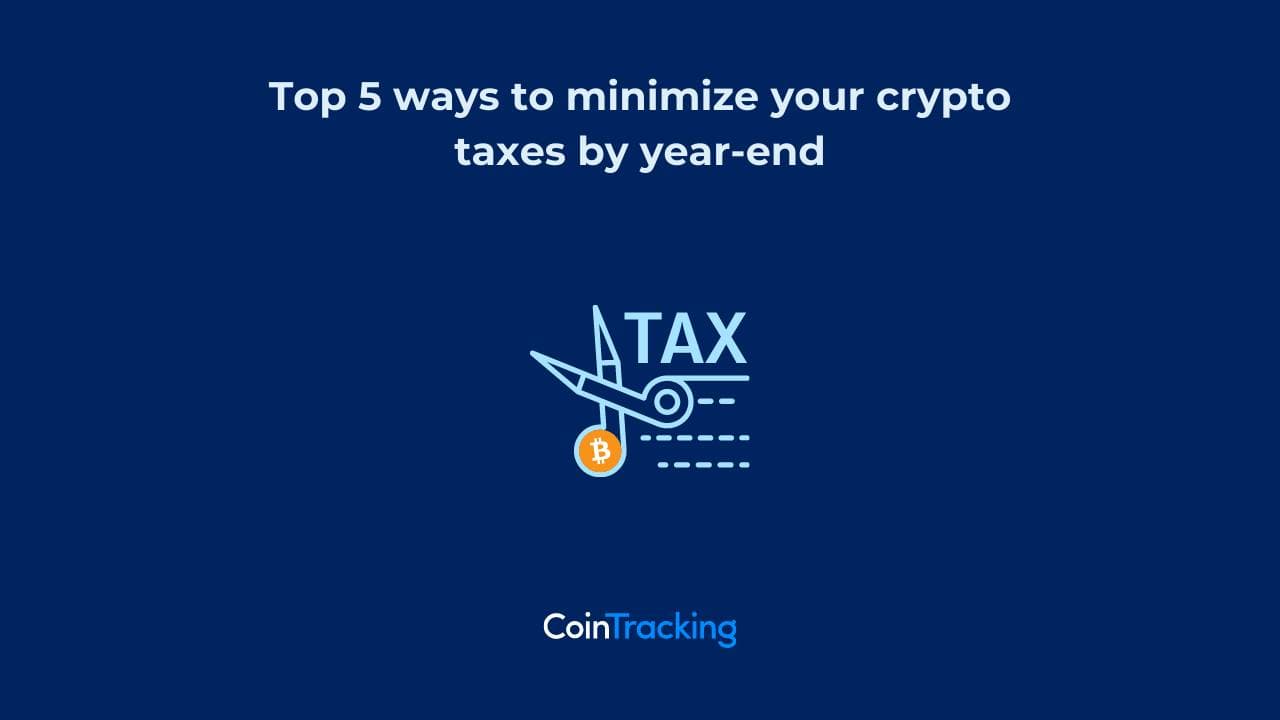Top 5 Ways to Minimize Your Crypto Taxes by Year-End
December 21, 2021: Are you looking for the top legal ways to pay fewer taxes on your crypto profits? In the US, careful tax planning can lead to a significant reduction in your crypto tax bill. As we approach the end of the year, there are opportunities for you to manage your crypto profits in the quest to minimize your tax liability.
With CoinTracking, you can easily become tax compliant by importing your trades from hundreds of exchanges, having your gains calculated automatically by using proper accounting methods in your country, and generating tax reports.
Let’s find out the top 5 ways to reduce your taxes on crypto:
Hold Crypto in the Long Term (Over 12 Months)
Long-term holding can bring various tax benefits across countries. In the US, if you buy crypto today and hold it for 12 months or more before selling it, you can enjoy a long-term capital gains tax rate.
Why is that advantageous? A long-term capital gains tax rate can range from 0% to 20%, while a short-term capital gains rate – when you sell before holding crypto for no more than 12 months – ranges from 10% to 37%. Countries like Germany and Australia also give investors tax benefits for holding crypto in the long term.
Take Advantage of the Inapplicable Wash Sale Rule for Crypto Until 2023
A wash sale rule does not apply to crypto until 2023, opening a door of opportunity to claim tax losses. The application of the wash sale rule means that an investor cannot sell an asset and buy it back within 30 days to claim a tax deduction. Unlike stock trading, crypto is currently not subject to the wash sale rule, but in 2023, the rule will apply.
Why would you want to use this rule? If you have a large capital gain/profit from your crypto trades during 2021, it may be advantageous to claim some losses to offset your capital gains, which will lower your crypto tax bill and minimize your taxes.
Crypto Tax-Loss Harvesting
Crypto tax-loss harvesting is similar to the absence of a wash sale rule in crypto, and you can use it to offset your total tax liability. If you have a large capital gain from your crypto trades during 2021, but you have some coins that lost most of their value, and you don’t believe in their short-term recovery, it may be advantageous to realize (sell) those positions at a loss. By doing so, you can lower the overall capital gains you have from other trades, thus paying fewer capital gains taxes.
Donate Crypto to a Qualified Charity
Donating crypto to a qualified charitable organization allows you to take a tax deduction if you take an itemized deduction on your tax return.
If you donate crypto that you have been holding for more than 12 months and its FMV at the time of your donation is higher than its cost basis, you can take a charitable contribution deduction in the amount of FMV of the crypto you donate.
At the same time, you do not need to recognize any gain for the difference between the FMV and your cost basis. This approach is better than if you first sell the crypto and then donate some or all of the sales proceeds because, in that case, you will need to recognize a capital gain and pay taxes on it.
Finally, donating crypto to an individual – sending it to a wallet that belongs to another person – does not qualify as a donation for tax purposes.
Move to a Crypto-Tax-Friendly State or Country
You can also save taxes by moving to one of the top crypto tax-friendly US states. Additionally, you can even consider moving to a country like Puerto Rico, where the tax benefits are very high if you pass the threshold for investment needed to be certified as a Puerto Rico resident.
Other countries offer good tax advantages, such as Germany or Portugal, while others like Singapore are highly oriented to attract crypto investors and businesses with friendly regulation.
Remember that you can only enjoy these benefits if you carefully plan your crypto trades from a tax-optimization perspective and with the thorough help of a tax professional with experience in crypto.





